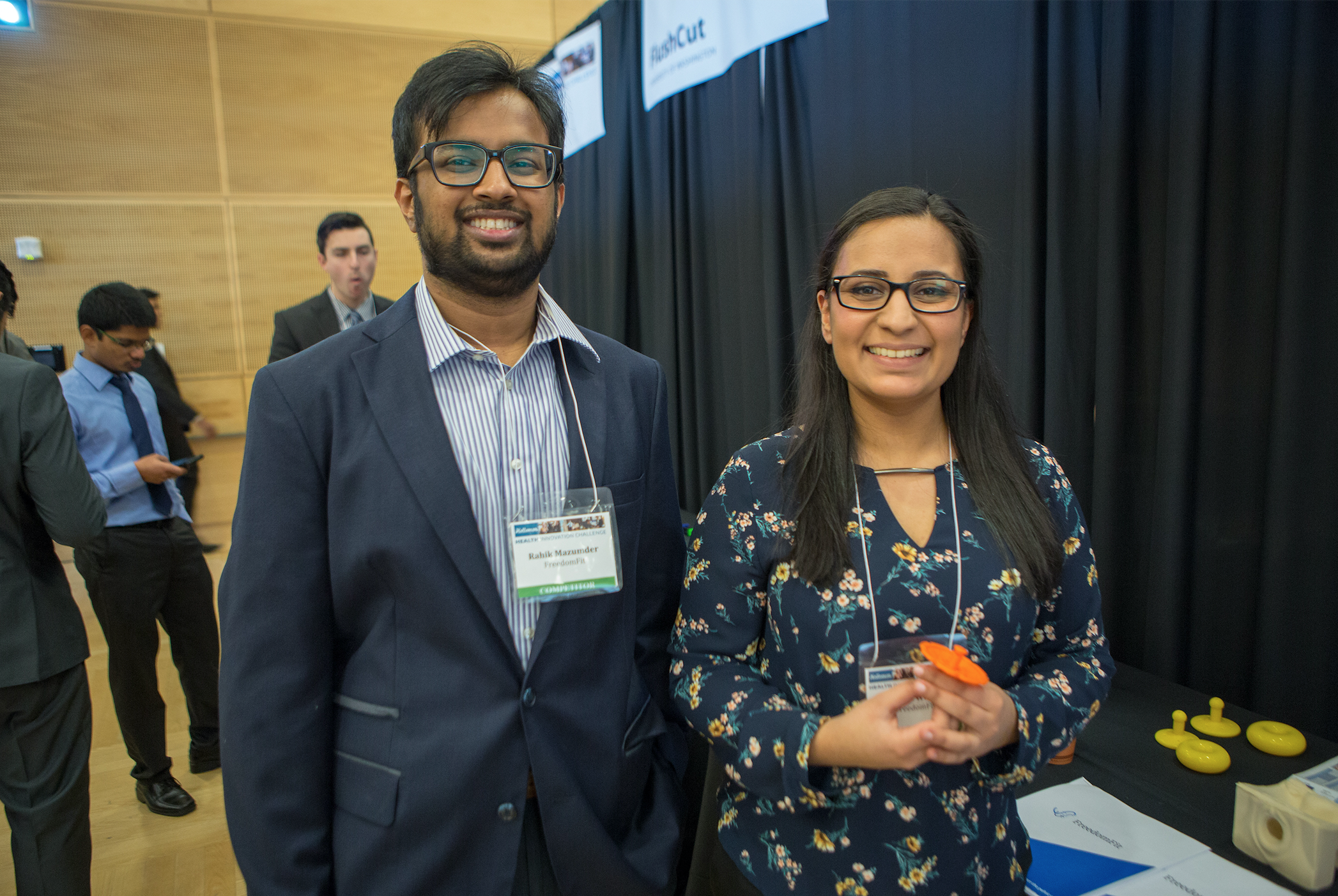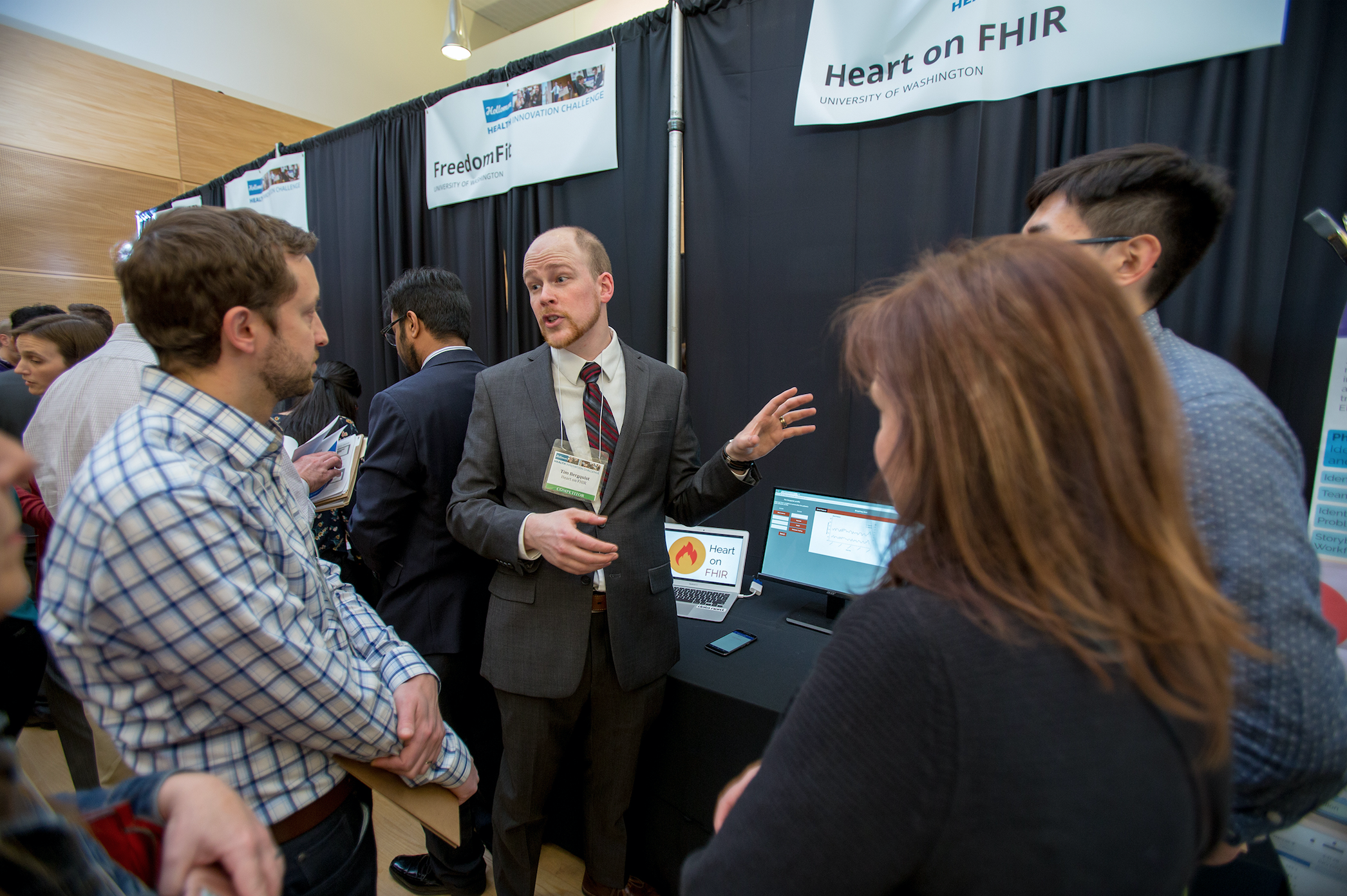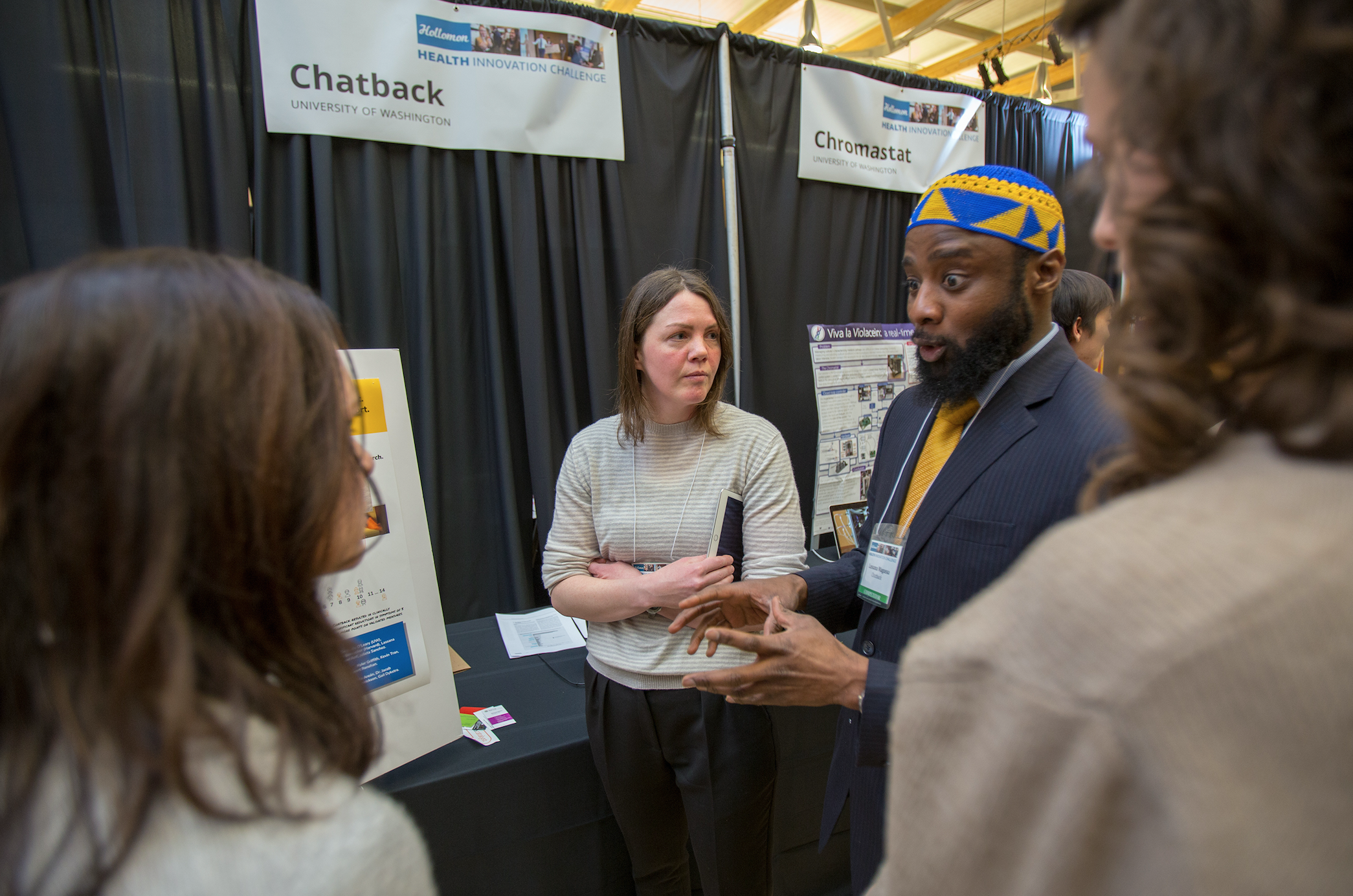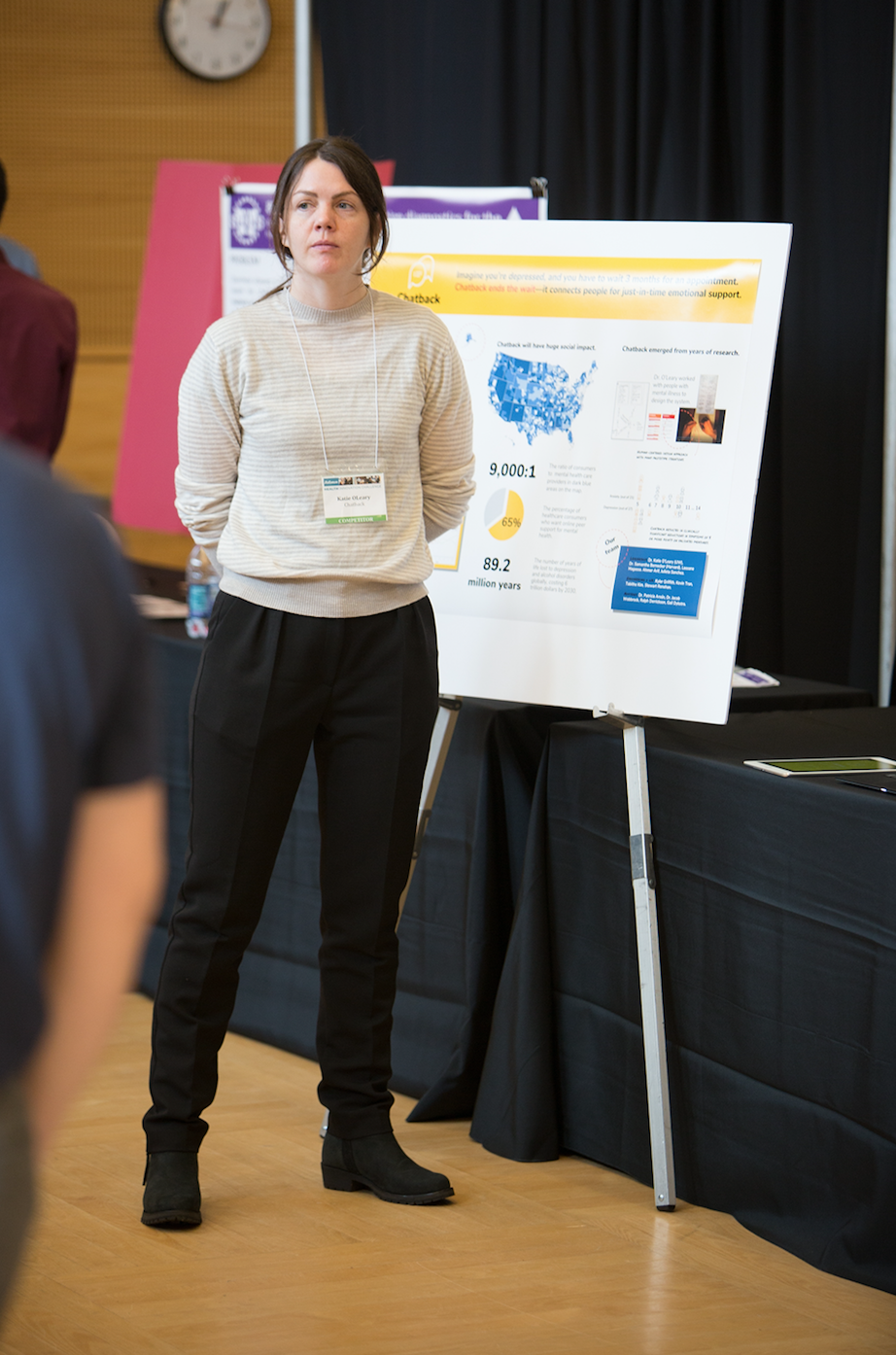User-centered design helps bring healthcare into the 21st century
Last week I joined over 100 health care entrepreneurs, investors and healthcare professionals to judge the entries at the University of Washington Hollomon Health Innovation Challenge hosted by the Foster School of Business' Buerk Center for Entrepreneurship. Torben Nielsen, VP of Innovation and Strategic Investments at Premera, delivered the keynote and cited the following quote: “During the day, I work in healthcare and at night I return to the 21st century”. He challenged the students and judges to develop the next generation of technology to bring the U.S. healthcare system into the current century. Judging from the breadth of innovation on display at the event, the future is closer than ever.
Twenty-two student teams participated in this year’s challenge, developing solutions to a variety of issues in health care. Innovations ranged from solutions to address the shortage of mental health providers to the characterization of drug candidates for potential protein interactions. Teams presented their companies in a one minute pitch, then demonstrated their prototypes in a trade show format.
Applying a User-centered Design Process
As Lead Usability Engineer at Product Creation Studio, I was particularly interested in talking with the student teams about how they had applied a user centered design process in their development. Teams had access to mentors from the Human Centered Design and Engineering program, and I was eager to see what they had learned and applied to their projects. I was impressed by the number of teams that had used user research methods to deeply understand the problem they were trying to solve and the many stakeholders that would be involved, from patients to health care providers. I was also excited to see that a number of teams had tested out their solutions with end users and gotten feedback that helped them to further refine their products.
One such team was Chatback, an online messaging platform that connects people suffering from mental illness to others in similar situations for peer-to-peer support. Interviews with people experiencing symptoms of depression and anxiety helped the team to understand their users and some of the problems facing people with mental illness such as a shortage of providers and long waiting lists. Working with potential end users, the team developed a tool to help connect people for mutual support that provides prompts and guidance for the interactions. Finally, the team conducted a study that showed a significant decrease in mental health symptoms with just a few weeks of use.
The team from Heart on FHIR, a patient management tool to help clinicians monitoring patients with heart failure, also performed user research with a range of stakeholders, including patients, caregivers and health care professionals to identify the major pain points in managing heart failure patients. They used this information to develop a product that enables physicians to tailor the system to individual patients and provides seamless integration with the electronic health record, eliminating the need for the health care provider to use a separate application for monitoring their patients.
FreedomFit also employed user centered design to develop their medical device. This team developed a dynamic shape-changing pessary for treatment of pelvic organ prolapse and focused on their end users to develop a solution to a problem that faces up to 50% of women at some point in their lives. By understanding the limitations and pain points users encounter with current pessary devices, the team was able to develop a novel design that eliminates the need for lengthy fitting through trial and error, reduces tissue trauma and pain and enables women to manage their condition more independently.
The Health Care Industry is Ripe for Innovation
These teams represent just a few examples of the ways in which student teams embraced a user centered design process to develop innovative solutions to a wide variety of issues facing the health care field. Health care is an industry that is ripe for innovation, but also a challenging area due to its complexity and the range of stakeholders involved. Whether you are developing health care IT, mobile applications or medical devices, a user centered design process is critical to identifying a need and developing a meaningful solution to address it. As I left campus after the competition, I couldn’t help but feel optimistic that the next generation of health care innovators would use a user-centered design approach to bring health care into the 21st century.
Congratulations to the $15,000 Hollomon Family grand prize winner A-Alpha Bio and their AlphaSeq technology!





